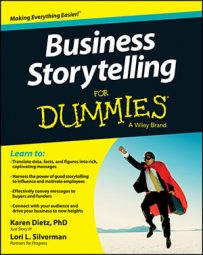Because stories inherently need to have a plot and conflict, heightened drama and tension are key. This means early on you’ll want to reveal feelings around the troublesome situation. These might include fear, despondency, frustration, anxiety, or anger.
Because we live in a world where we’re bombarded with so much stimuli that we frequently tune out, our brains also hunt for — and delight in — novelty and surprises. They amplify engagement. Which means we need to find ways to incorporate all of these elements into a story.
Consider these questions when you want to embellish a story with more emotion, novelty, drama, and surprise:
What can you do to strengthen the emotions already resident in the story and where can you add them to keep people engaged? For example, instead of describing a character as angry, find ways to demonstrate the anger through dialogue and actions.
Also consider using emotional swings such as from happy to sad and to happy again — or from humored to shocked to contented. You don’t want to leave your audience in a pit of despair. Nor do you want to spark really uncomfortable emotions in them without resolution. Adding more emotions into the story means you also need to keep them balanced.
What tension can you build into a story by waiting to reveal key pieces of information until the end? People don’t always need to know immediately why something is happening in your story. If revealing this later on adds an element of surprise, delay mentioning it — as long as your intent isn’t to manipulate others.
Does the nature of your story allow for humor? Think about what kind of humor will work (dry, understated, overstated, witty, slapstick) and which is appropriate for the audience (considering such things as cultural background and physical location). Can you slip humor in as an aside, from you as the narrator?
In a business setting, it’s best to avoid biting sarcasm, put downs, sexual innuendos, ethnic/racial, religious, and political humor — in essence, anything someone might find offensive.
What unexpected event or decisions could you embellish or add into the story to add drama and surprise? Maybe someone jumps out of a closet and shocks a person. Or maybe there are wrong choices your characters made that could be emphasized.
Sometimes a word or phrase has multiple meanings that take listeners in one direction, when in fact, something else has happened. This can add an element of surprise, and even humor.
For example, Lori tells a story of a CEO being interviewed on the phone for an article. He interrupts the call several times. The final time he says, “Can you hold for a sec? I’ve got a big fish here on the line and I’d like to reel him in.” Listeners immediately assume he means a big deal when he’s really in a boat, fishing.
What truly surprising obstacles are standing in the way of the main character? You may be able to find ways to make the obstacles in the story more dramatic or difficult.
In a story, one way to add drama and mystery is to use a but contradiction. The audience’s imagination automatically starts filling in the blanks and trying to resolve the added tension. Here are some generic examples:
It was sunny, but I was emotionally dark.
I was happy as a lark but also blind as a bat about Tom.
I went to my job interview but was totally clueless.
What can you do in your story to add emotion, novelty, drama, and surprise?

